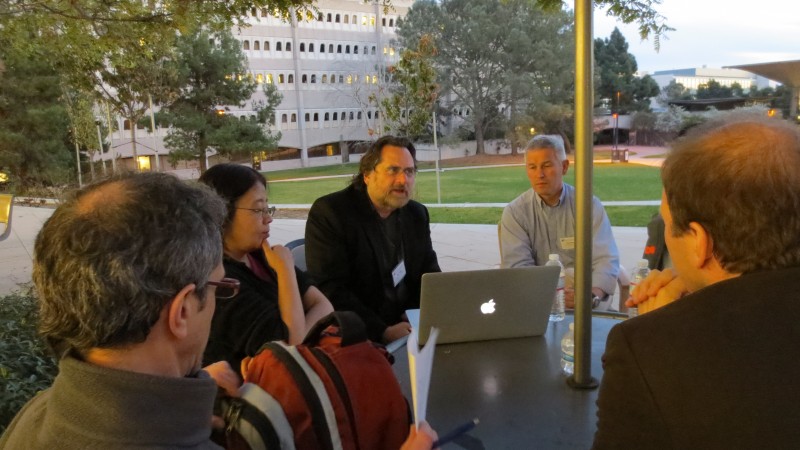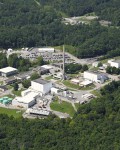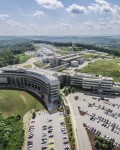OAK RIDGE, Tenn., August 27, 2014 — The Department of Energy’s Oak Ridge National Laboratory concluded a series of workshops this month that engaged scientists from around the country to identify grand scientific challenges and how they might be addressed through application of neutron science.
The workshops sought to outline the most pressing challenges in the fields of quantum materials, biosciences, soft molecular matter and materials synthesis and performance. Once defined, Oak Ridge leaders hope to push the limits of neutron science and associated analytical techniques in order to address them over the next decade, said Ramamoorthy Ramesh, ORNL’s deputy director for science and technology, who helped organize the series.
“What are the big questions that will lead to breakthrough discoveries?” Ramesh asked. “We want to be thinking about the right scientific questions. What are the questions that absolutely deserve to be asked, but we don’t have the right tools to address them?”
Nearly 150 researchers from more than 70 institutions joined ORNL staff at four workshops in California and Illinois beginning in December 2013.
The fourth and final workshop, held this month in Chicago, focused on engineering systems, specifically on materials synthesis and performance. Because energy and cost-efficient manufacturing are national priorities, the ORNL coordinators for this workshop invited industry partners to collaborate.
“Neutrons are a great probe of materials,” said Ram Seshadri from the University of California, Santa Barbara, or UCSB, a participant in the Chicago workshop. “Neutrons tell us things that X-rays cannot. Understanding magnetic oxides through the use of neutrons transformed our understanding of functional oxides, leading to the lithium ion battery.”
Seshadri uses neutron scattering among other techniques to study functional materials.
“Essentially, neutrons continue to push the frontiers of our understanding of functional materials, such as batteries that last longer, and the new magnetic materials that could go into wind turbines and electric cars,” he said.
The sessions took place in informal settings rather than in a traditional conference environment to allow more time for debate. Input from researchers who do not normally engage in neutron science research is also helping drive discussion about important topics for the benefit of the broader scientific community. The workshops have already proven successful in generating discussion.
“It was really unusual to have such a diverse group of researchers together from such varied backgrounds within biology,” said Paul Langan, Biology and Soft Matter Division director at ORNL and co-chair for the second workshop. “But I think it really worked to challenge them to think ahead. It brought about great discussions we could never have gotten from sitting down with them individually.”
The August workshop, for instance, helped the community identify improvements in neutron scattering resources available to scientists.
“The participants really emphasized the need for more instruments for diffraction at the Spallation Neutron Source, operating at higher resolution than is currently possible,” Seshadri said.
The first workshop, which focused on the physics of solids, was held at Lawrence Berkley National Laboratory in Berkley, California, in December 2013 and was led by the University of California at Berkeley’s Robert Birgeneau.
Susan Taylor from the University of California at San Diego and Heidi Hamm from Vanderbilt University led the second workshop, held in January in San Diego and focused on structural biology, biomaterials and bioengineering.
Philip Pincus of the University of California Santa Barbara and Matthew Tirrell from Argonne National Laboratory and the University of Chicago led the third workshop, a session on soft molecular matter held in Santa Barbara in May.
With the workshop series complete, leaders plan to present their conclusions to DOE’s Office of Science, which sponsors and oversees two neutron User Facilities, the Spallation Neutron Source and the High Flux Isotope Reactor, both located at ORNL. These presentations will focus on the benefits that a second target station at SNS will provide to meet future scientific challenges.
“Oak Ridge National Lab has been using neutrons to study matter since 1944 with the pioneering work of Clifford Schull and Ernest Wollan and their colleagues,” said Thom Mason, ORNL director and neutron scientist. “Those pioneers paved the way for researchers to understand the structure and properties of materials, macromolecular and biological systems, and the fundamental physics of the neutron. We’re ready now for the next great challenge and we feel a second target station at SNS will address emerging science challenges – challenges that require long-wavelength neutrons to access the longest length and slowest time scales.”
ORNL is managed by UT-Battelle for the Department of Energy's Office of Science. DOE's Office of Science is the single largest supporter of basic research in the physical sciences in the United States, and is working to address some of the most pressing challenges of our time. For more information, please visit http://science.energy.gov.
View Reports from the workshops:
- Quantum Condensed Matter, Univ. of California - Berkeley
- Grand Challenges in Biological Neutron Scattering, Univ. of California - San Diego
- Grand Challenges in Soft Matter, Univ. of California - Santa Barbara
- Frontiers in Materials Discovery, Characterization and Application, Schaumburg, IL





